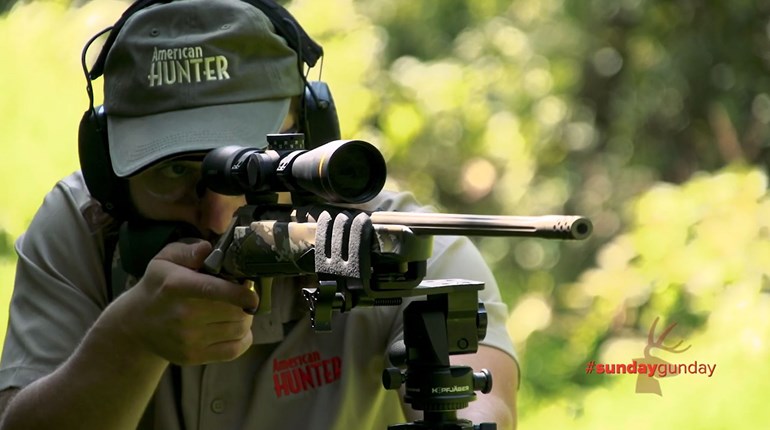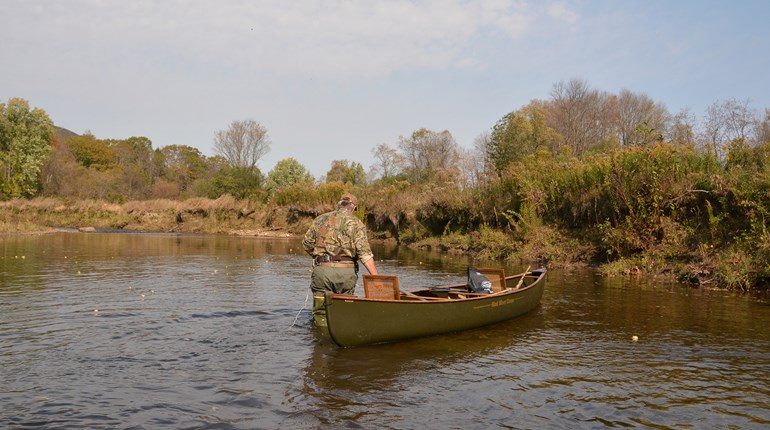
Depending in which area of North America you hunt, you may be anywhere from in the heart of the rut to many weeks after the bucks have stopped chasing does like hormone-fueled teenagers and come back to their senses. But, unless you're in a state like Alabama with a season that lasts into February, your deer season may be nearing its end—it's time to throw out the rule book and swing for the fences if you're going to be successful. Here are five strategies that may be a bit out of the ordinary, but could help you salvage your season.
1. Get Out Of Your Stand
If you're over the age of about 50 or hunt anywhere much west of the Mississippi, this won't sound very crazy to you, but to many the thought of hunting whitetails on foot is a deeply foreign concept. Treestands are a great way to kill trophy bucks and, in many areas, remain the best tactic for doing so. That said, there's nothing that says you can't hunt on the ground when the stand isn't producing results.
I get bored to tears sitting in stands and by far prefer sitting on the ground and stalking around the woods if the terrain allows for it. The farm where I do most of my hunting is an even mix between wide-open cow pastures and thick river bottoms, with not much in-between. This makes stalking a challenge, but not impossible. Since the ground is covered with noisy leaves this time of year, I wait until just after it has rained to take to the woods. Snow is even better, but we don't get that here very often. With the wet ground masking the sound of my movement, I've been able to sneak up on several deer with enough time to assess my prey and make a shot. You have to move slowly and keep your eyes open, but it's a great exercise in patience.
Sound impossible? Just last week, a friend of mine went into the woods searching for a wounded buck that his buddy had shot. He grabbed his H&K .45, almost as an afterthought, and stumbled his way in to the thick stuff with little regard for stealth. He spotted a mature buck hiding in some brush and put a round into its shoulder, sure that it was the wounded deer they were seeking. The deer bounded off and two shots later the chase was over. There was no sign of a rifle wound on the buck's body. Would you believe that a guy could stalk up on a hidden buck in the Deep South with a .45 and kill it? You're not going to see that on television.
2. Pull A Nooner
We all know that the majority of deer movement happens at dawn and dusk, but that doesn't mean that deer don't move at midday. If you can find a spot where bucks feed close to their beds and sit it (acorn flats and fruit trees are perfect), you very well may catch a buck moving at high noon. You've got to be really serious about getting into the area without a sound and play the wind right, but if you can get into that buck's bedroom without being busted, you have a real shot at success. Try this during a full moon when the deer are feeding at night and are more likely to get hungry at midday. As I write this, we're two days after the time change here in the Central time zone. Just yesterday, a mature buck that I've been hunting for two years was spotted in a food plot at 8:15 a.m. (which was 9:15 the day before). Had I chosen to hunt, I would have already left the stand to head to work when that buck made his appearance. Call in sick and go kill that deer!
3. This Old House
Part of the problem with ambushing an educated mature buck is not spooking that buck on your way into the area. I know of plenty of spots that require walking through the planted fields where the buck is likely to feed in order the get to your hunting spot. Unless you're willing to sneak through the field at 3 a.m. and sit for hours until the sun comes up, you're out of luck. Maybe. Farms and rural areas that are home to much of our deer habitat are filled with abandoned farm and tenant houses, as well as barns and sheds. Camping out inside an abandoned structure is an effective way to get into the hunting area with stealth. Deer see those old houses as part of the habitat, and even feed on old shrubs and gardens within feet of them. Scout the structure ahead of time to ensure that it's safe to sleep in and don't be surprised to encounter some creatures that you wouldn't ordinarily see in your bedroom. Sneak to your honey hole just before sunrise and you may catch that smart buck by surprise.
4. Islands in the Stream
It's no secret that deer spend much of their time near rivers and creeks. What you may not realize is that trophy bucks sometimes use small islands for refuge once the hunting pressure heats up. The problem lies in how to approach these deer in their island sanctuaries with a reasonable chance at a shot. With two hunters and a game plan, we have a chance at success.
The challenge is stealth, but our forefathers have given us a technological advantage: the canoe. Our plan is to drop our friend, who is likely to be the shooter, clad in his waders on the downwind side of the island. Paddling around to the upwind shore, we stalk our way across the island's length. Being cognizant of each hunter's field of fire and the fact that shooting swimming deer is unlawful in most jurisdictions, either the "beater" or the wader man has a reasonable chance at a quick land shot as the buck either decides hide or to escape from Alcatraz.
5. Glass the Arroyos
In many areas of the West, like near the Platte River of Colorado, whitetails congregate in and around the river bottoms. Though many hunters spend their days in the thick bottoms watching the does, there's another plan- one that can be far more productive. Though bucks often visit the bottoms in the morning and evening hours, they spend their days in the most unlikely of places—the seemingly flat and coverless ground among the yucca. The river bottoms are lined with endless arroyos that spread like capillaries into the surrounding high desert. The bucks travel from the rivers, up the arroyos, until the reach their daytime hiding place. At the very tops of the arroyos, where the change in terrain is barely discernable, the big boys bed down for the day. To hunt them, we must travel the high ground and carefully glass for tines sticking up just over the yucca. Once you spot a buck, it's just a matter of playing the wind and making a good stalk until you're in range. If you're luck, the buck will stand up and give you a second or two for a shot before he takes off.
The most important tactic is to spend as much time hunting is possible. I've killed deer early in the morning, and in the middle of the day; I've killed them on the ground with a handgun and I've killed them from up a tree with a rifle. But I've never, ever, killed a deer from my couch or my desk.





































